What to eat JAPAN 🇯🇵 Tonkotsu ramen
Tonkotsu ramen was formed as a hybrid of two pre-existing ramen styles: soy sauce ramen that appeared in Tokyo at much the same time and Nagasaki champon, which featured a heavier stock made of pork bones.

Tonkotsu ramen
Published November 8, 2024 · by Amanda Rivkin Häsler
Tonkotsu ramen, or pork bone broth ramen, is legendary throughout the world for its creamy texture, produced through a long, slow cook of the pork bones in an effort to form a cloud-like stock that oozes umami. It is also the rare national dish with a most clear origin story as it was invented in December of 1937 in Kurume City, Fukuoka on Kyushu Island, the fourth largest in Japan that historically opened the ancient land of the rising sun to the world as it is located closest to mainland Asia.
Historians of the great comfort dish of ramen believe that Tokio Miyamoto was the first to invent the dish at his yatai or outdoor food stall. His success meant he could open a ramen shop proper called Nankin Senryo in Kurume. That shop continues to operate as a family-owned business to this day, though reviews appear to be a mixed bag with many more familiar with its latter evolutions feeling a bit sheepish about the original. It is now in the hands of the third generation of Miyamotos and grandson Hiroshi.
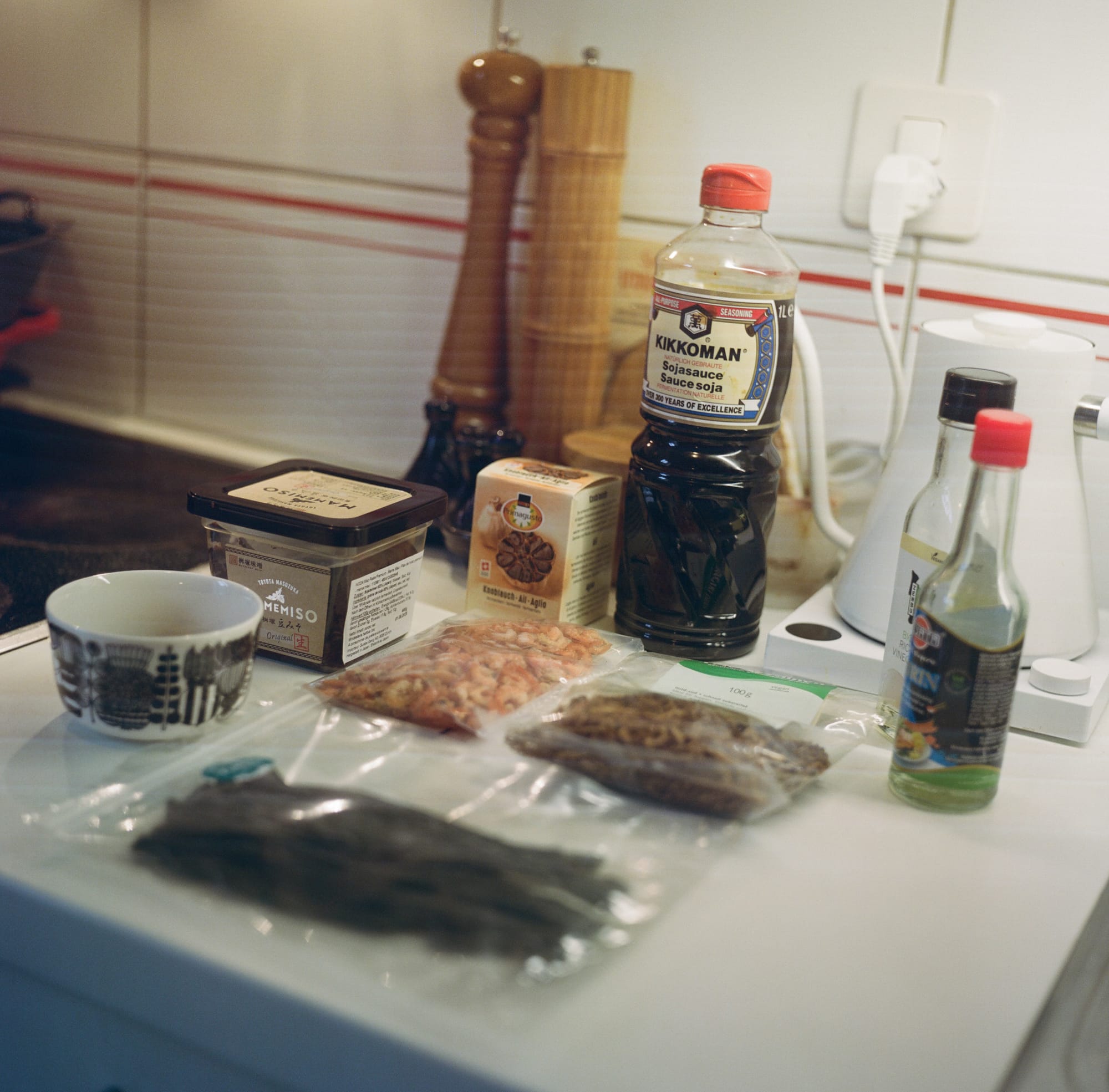
Tonkotsu ramen was formed as a hybrid of two pre-existing ramen styles: soy sauce ramen that appeared in Tokyo at much the same time and Nagasaki champon, which featured a heavier stock made of pork bones. Miyamoto combined the two epic flavors to make his own, original tonkotsu ramen. In Kurume, ramen shops practice yobimodoshi, a process of cooking soup in the same pot over and over again which over time, lends a full-bodied and even fermented flavor to the stock.
However, the evolution of new dishes hardly ever can be the work of one set of hands. The popularity of the original dish gave life to imitators and new discoveries. Katsumi Sugino, the owner of nearby ramen shop Sanku, accidentally brought the dish to the next level in 1947. Sugino went out shopping and left his mother in charge of the shop. When he returned, he found the soup was boiling and white from overcooking.
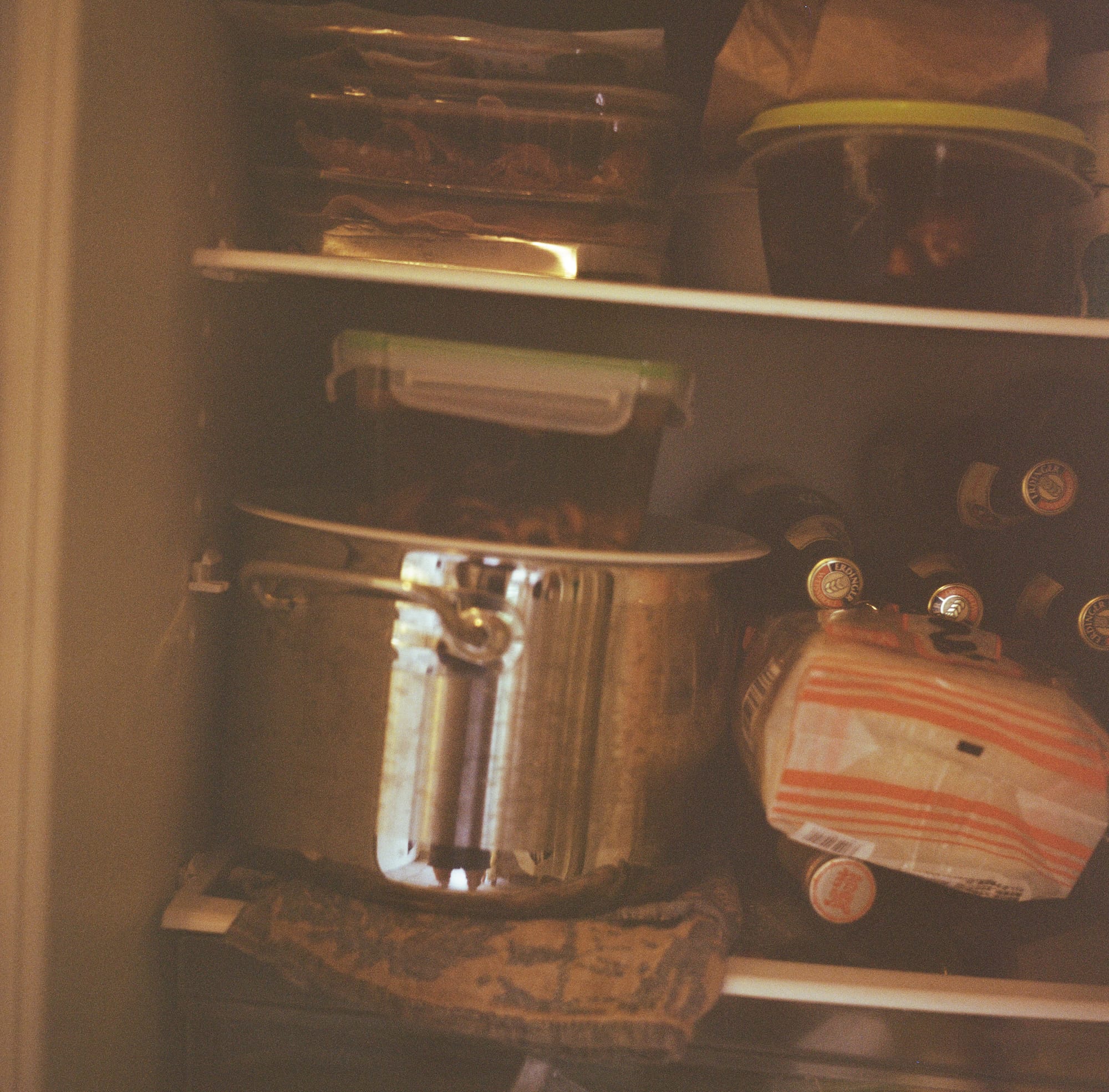
In an attempt to salvage the stock, Sugino seasoned the hell out of it and found it absolutely popped with umami. He even found it tastier than the original recipe. Sanku became enormously popular, with over 100 cooks coming to learn Sugino’s technique. These chefs went on to open their own shops across Kyushu Island and in Yamaguchi prefecture on neighboring Honshu island. From there, the dish spread in popularity across all of Japan, and eventually the world.
Hakata ramen in Fukuoka city, a port on the northern edge of Kyushu Island, is home to the most celebrated tonkotsu ramen, with tell-tale signs of the influence of Kurume and Nankin Senryo, as well as the Hakata ramen stall Sanmaro. While not as rich as the ramen of more inland Kurume, Hakata ramen features thinner noodles and many shops in the area let the customer decide the desired firmness of the noodles, ranging from harigame or extra firm to futsu or normal.
Another celebrated take on tonkotsu ramen can be found at Nagahama Ramen in Fukuoka. The differences between Nagahama and Fukuoka have blurred over time but Nagahama is the port area of this coastal city, where tonkotsu ramen was traditionally made for fishermen working at the port. The noodles were extra thin as it would cook the fastest so the laborers would not have to wait long. It is also believed that a practice of refilling bowls with remaining stock but no remaining noodles with yet more noodles may have begun in Nagahama.
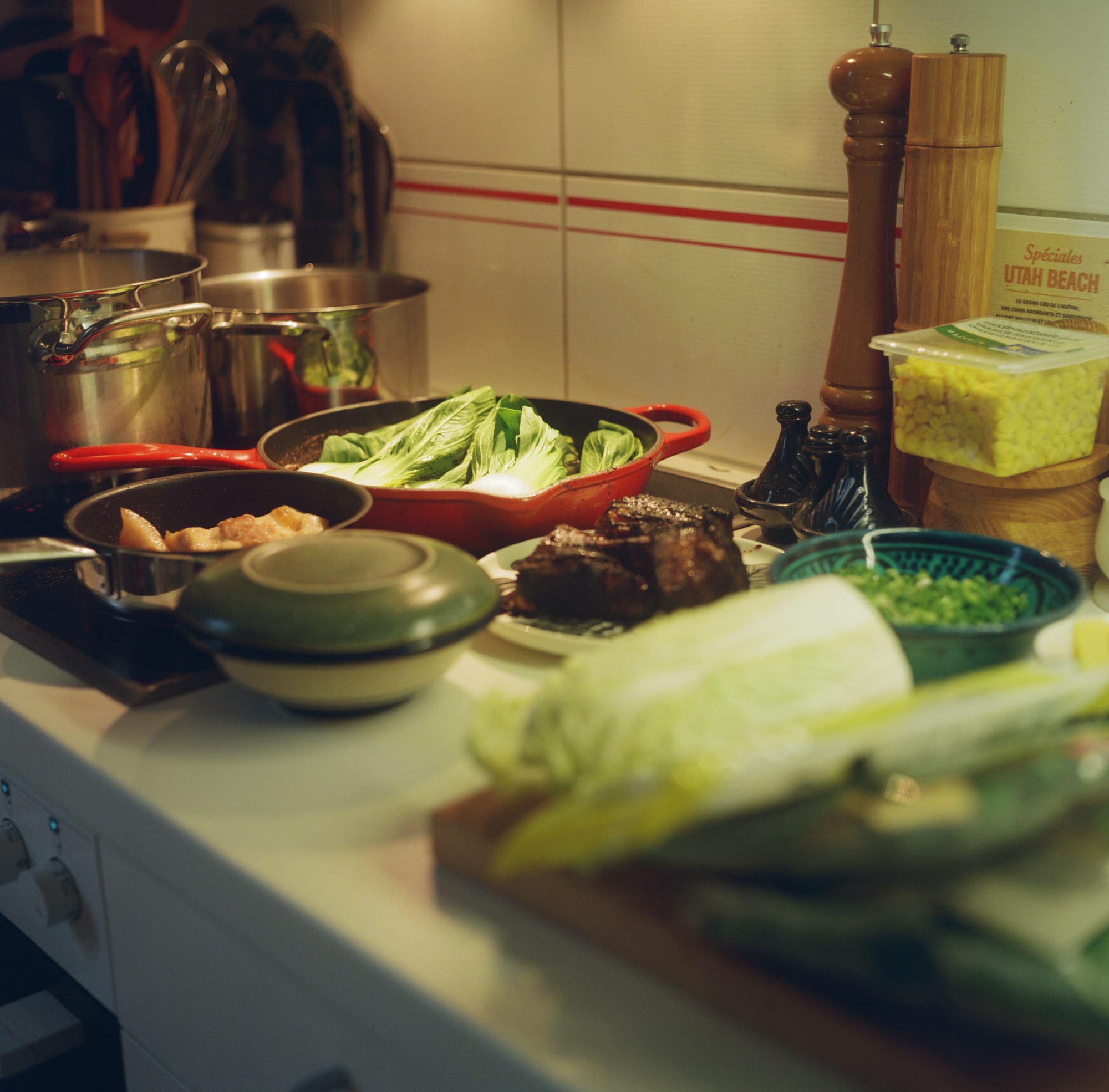
Both Naghama and Hakata ramen have condiments like benishonga, a red pickled ginger, as well as sesame seeds. Traditionally, tonkotsu ramen is topped with chashu, the delicious pork belly, thinly sliced. Additional ingredients in the broth might include onion, garlic, spring onions, ginger, pork back fat, pig’s trotters as well as chicken carcasses or some combination. Kombu, kikurage, shoyu, chili bean paste, sesame seeds and other options might also be added.
While this humble but delicious fisherman’s fast food might have once again been a quick but hearty meal on the go, in modern times tonkotsu ramen is hardly a quick and easy dish to make. It can take a day if not days to make a proper bowl of ramen. Our recipe in fact is a lot of work but the results were delicious and ramen is one of those things that especially if you grew up as a latchkey child of the eighties and nineties or after in a western country, it represents a certain modicum of independence, coming of age and just plain old comfort.
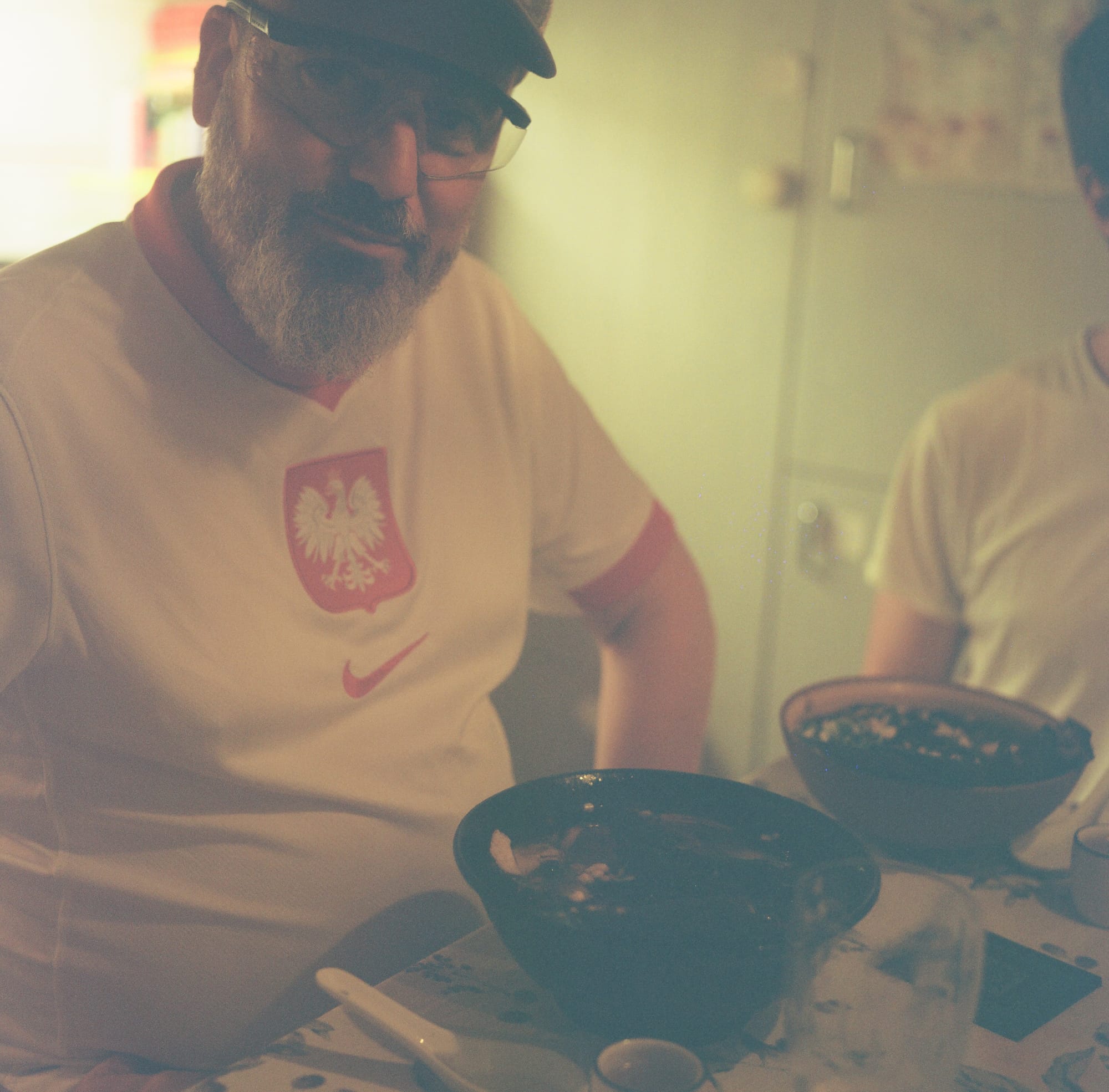
Recipe
Ingredients:
For the tonkotsu broth:
Pig bones
1 pig trotter
Ginger
1 white or yellow onion
1 Chinese cabbage core
For the tare:
100 grams of dried shrimp
6 dried shitake mushrooms
1 sheet of kombu
1 pinch of daikon
2 cloves dried black garlic with peel
4 tablespoons miso
2 tablespoons soy sauce
1 tablespoon rice wine vinegar
2 tablespoons mirin
For the pork belly (chashu):
500 grams pork belly
1 cup shoyu
3 tablespoons dark soy sauce
3 tablespoons mirin
1 teaspoon garlic ginger paste
3 tablespoons date sugar
Chopped spring onions
For the ramen oil:
Pig fat from pork belly
Two chilis
Hot water (as needed)
For the ramen toppings:
125 grams of shitake mushrooms
100 grams of wood ear mushrooms
Avocado oil or another neutral cooking oil
Ginger
Light soy sauce
140 grams of bamboo shoots
Eggs, one for each guest
3 heads of bok choy
Dark soy sauce
Sweet corn (loose)
Wakame
Nori
Day One
Step 1: Beginning in the morning the day before you plan to eat tonkotsu ramen, begin by soaking the bones in a pot of water and refrigerate. This is to draw out any blood that remains so it does not contaminate your soup. After several hours, drain the water.
Step 2: After 2-4 hours, take out the pork in water from the fridge, rinse and place in a fresh, larger bowl. Add aromatics such as ginger, a halved onion and the core of Chinese cabbage and fill with water to about 5-7 centimeters from the top. Place on high until it boils, stirring periodically so the pork bones do not stick to the bottom. Once it begins to boil, turn to low heat and leave uncovered 7-12 hours depending on how much pork you have and wish to extract.
Step 3: After 7-12 hours, remove from heat and refrigerate overnight.
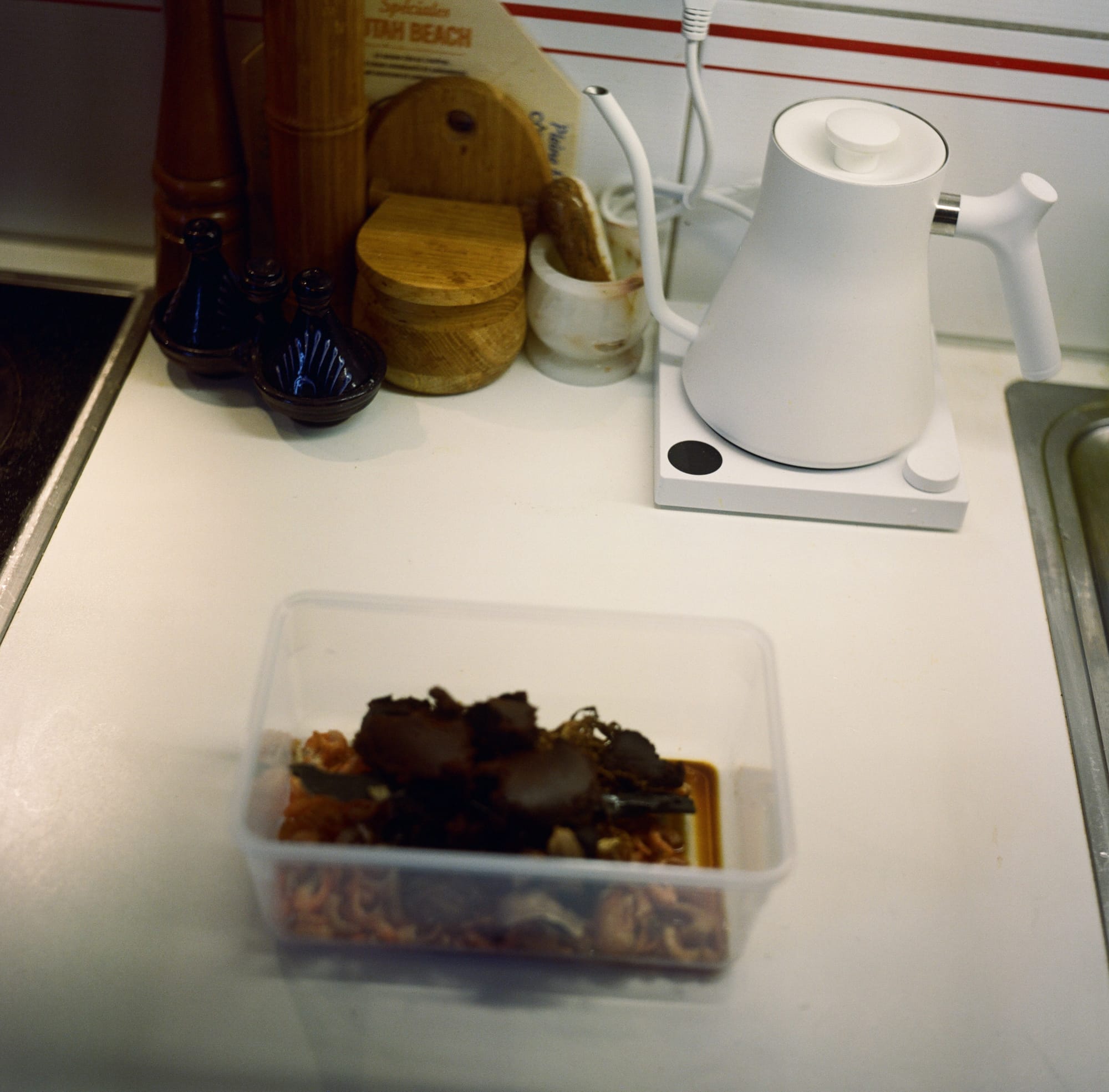
Day two
Step 4: Prepare the tare first thing in the morning by combining all ingredients in an air-tight plastic container and covering with water, stirring and leaving to sit in the refrigerator for a cold extraction.
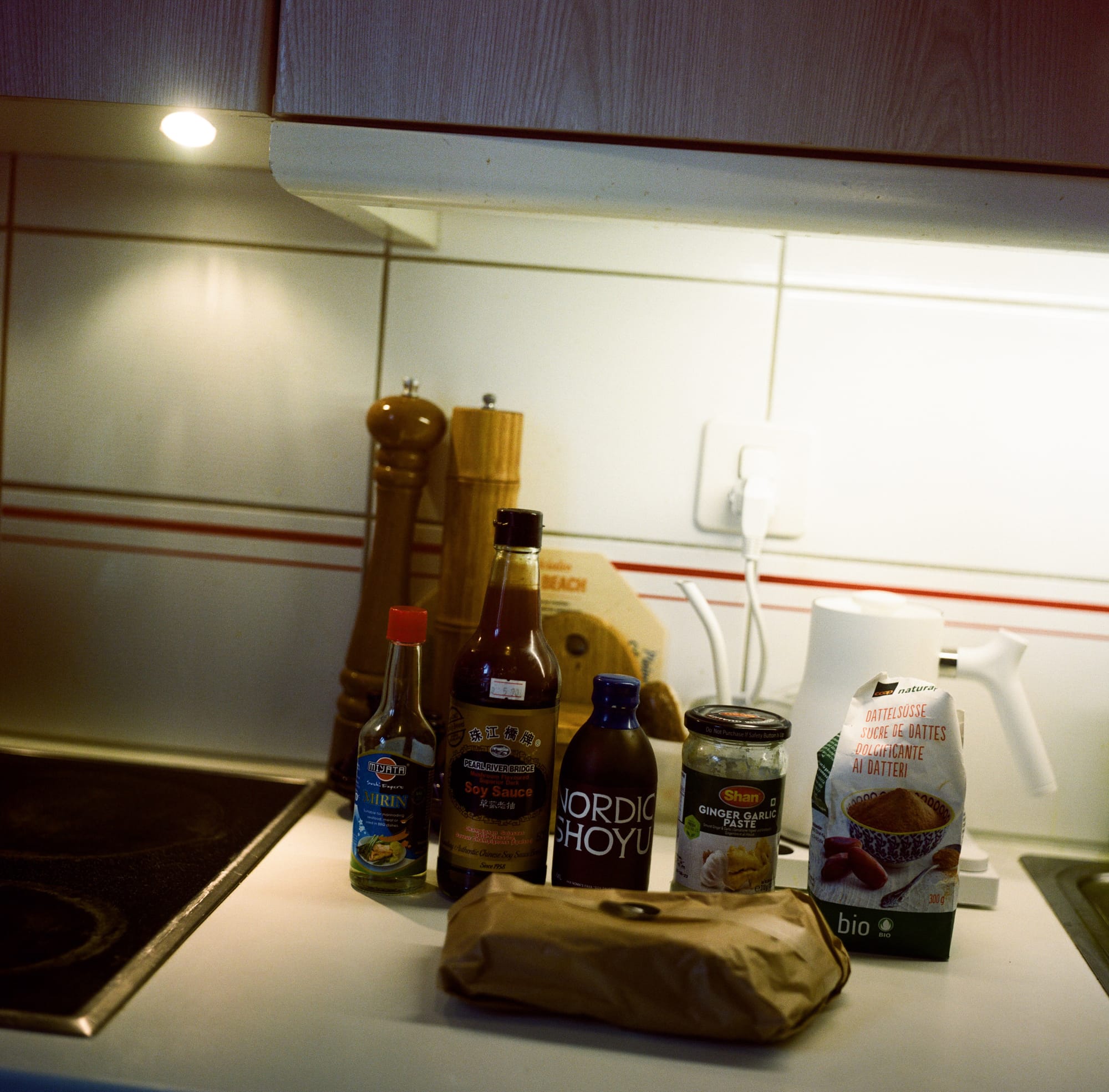
Step 5: Take pork belly from the refrigerator. Prepare the marinade by combining shoyu, dark soy, garlic ginger paste, mirin and date sugar. Use a fork to mix together.
Step 6: Cut the pork belly vertically in half. Cut off the top thick fatty layer and set to the side. Cut the half piece into half again vertically so that it is quartered. Dip in the marinade so that it is completely covered and repeat with the other half.
Step 7: Three to four hours before you expect to serve ramen, begin rendering ramen oil, or lard with water and chilis by placing the pork fat in a saucepan on low heat, one cup of boiling water and two chilis. Let sit on stove on low heat for three to four hours. Add more water as necessary.
Step 8: Two hours before serving, begin to braise the pork belly. Take out of marinade without discarding and place pork belly the side where the excess fat was removed down in a pan on high heat. Add some chopped spring onions. Brown on the outside, flipping as necessary. Pour in additional marinade until it begins to simmer and turn to low to medium heat. Let sit one to two hours before removing from pan.
Step 9: Cut up shitake mushrooms and wood ear mushrooms. Add to a pan lightly covered with avocado oil or another neutral cooking oil and some chopped ginger. Add a splash of light soy sauce in the midway stage for a brownish glaze and stir. Fry until perfect and set aside.
Step 10: Once mushrooms are removed, return pan to fire. Drain the bamboo shoots of liquid and place in the pan and lightly fry. Remove from heat when done.
Step 11: Place as many eggs as you have bowls of ramen to serve in a pan and bring to a boil. Remove and place in cold water and in the fridge after 5-7 minutes.
Step 12: Drain the tare and remove dried shrimp, kombu, etc. and bring to a low boil. At the same time, remove the pork belly from fire and allow to cool. Do not discard the caramelized marinade but instead add a little bit of water and pull from heat.
Step 13: Add a bit of water, scrape the bottom of the pan where pork belly was. Half the bok choy and place face down in this water and glaze on low hear.
Step 14: Peel the eggs. Cover in dark soy sauce and place back in the refrigerator.
Step 15: Remove stock from the refrigerator and place on low heat until you need to serve, then turn up heat.
Step 16: Pull bok choy from the heat and replace with boiling water for noodles.
Step 17: Slice pork belly and take a kitchen torch to it over a drying rack on the stove or other nonflammable surface so as to avoid starting a house fire.
Step 18: Boil the water for the noodles. Now it’s time to assemble the ramen! Add ramen oil and tare in a bowl, ladle in some broth. Place noodles in and garnish with various toppings, cutting the soy sauce eggs in half before serving.
Tips, tricks and notes:
In Bern, we were able to get pig bones, trotter and pork belly at the organic hipster butcher shop La Boulotte in Breitenrainplatz 38.
For all Asian vegetables including kombu, bok choy, spring onions, wood ear and shitake mushrooms and various sauces, check out Loeb Lebensmittel at Schauplatzgasse 39.
For miso soup base, wakame and nori, head to Globus Delicatessa at Spitalgasse 17/21 in the basement.
Learn where to eat Japanese food in Switzerland.
Follow our social media pages @swissglobaldining on Instagram, TikTok and YouTube